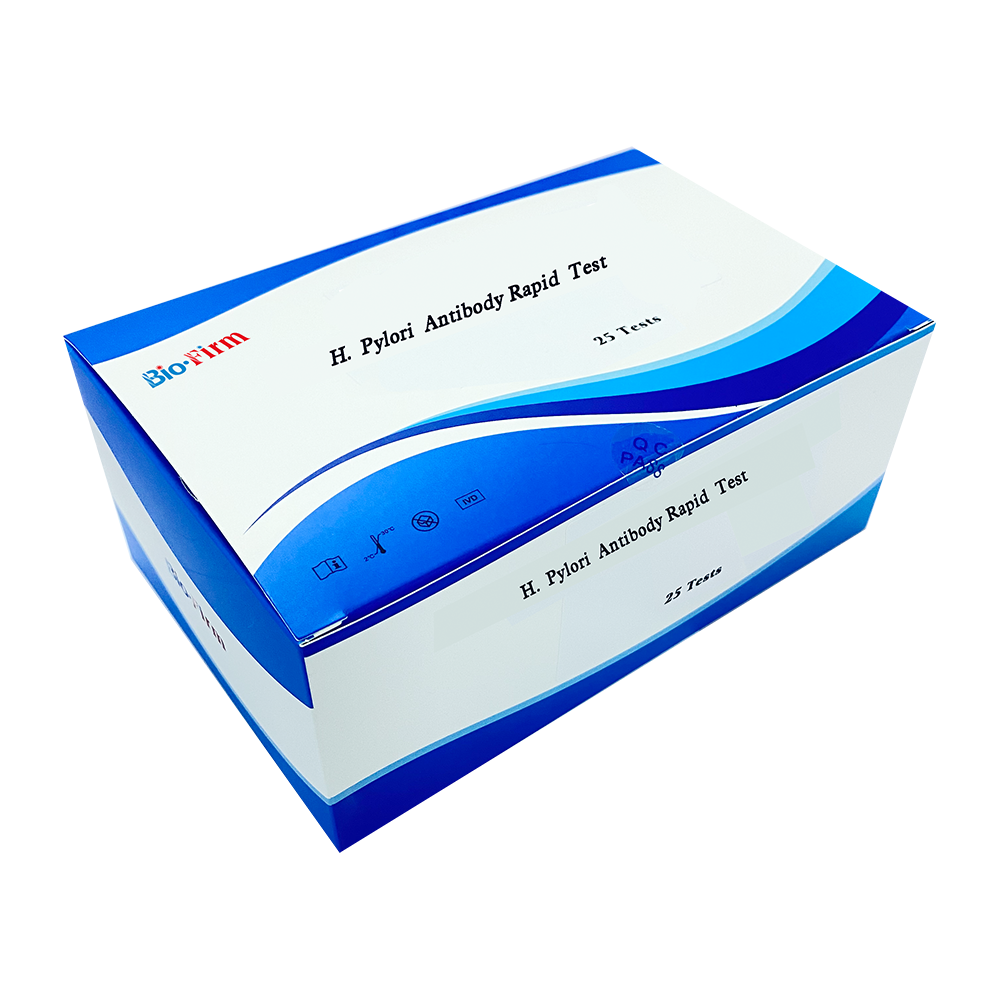Jul 01,2022
H. pylori antibody rapid tests are designed to detect the presence of antibodies against Helicobacter pylori (H. pylori) in a patient’s blood. Here’s a step-by-step explanation of how these tests work:
Principle of the Test
H. pylori antibody rapid tests are immunoassays that detect antibodies (IgG) produced by the immune system in response to an H. pylori infection. When H. pylori infects the stomach lining, the body generates antibodies to combat the bacteria. These antibodies can be detected in the blood, indicating a past or current infection.
Sample Collection
Blood Sample: A small blood sample is required for the test. This is typically obtained via a fingerstick or venipuncture (drawing blood from a vein).
Test Procedure
Test Device: The rapid test typically consists of a test device with a sample pad, a reaction zone, and a control line. The device may look similar to a home pregnancy test.
Application of Sample: The collected blood sample is added to the sample pad of the test device. The sample may need to be mixed with a diluent if required by the test instructions.
Migration of Sample: The blood sample migrates through the test device by capillary action. As it moves, it encounters a specific antigen or antibody-coated area within the test strip.
Detection Mechanism
Antibody-Antigen Interaction: If H. pylori antibodies are present in the sample, they will bind to specific antigens present on the test strip. This interaction forms a complex that reacts with a second set of antibodies, which are typically linked to a detectable marker (e.g., colored particles or enzymes).
Appearance of Results: The test strip has two lines—one for the test result and one for the control. The presence of a colored line in the test area indicates a positive result (i.e., antibodies against H. pylori are detected). The control line confirms that the test has been performed correctly.

Interpretation of Results
Positive Result: If antibodies to H. pylori are detected, the test shows a visible line in the test area. This indicates that the patient has been exposed to H. pylori, suggesting an active or past infection.
Negative Result: If no line appears in the test area, and only the control line is visible, the result is negative, indicating no detectable antibodies to H. pylori in the sample.
Invalid Result: If the control line does not appear, the test is considered invalid, regardless of whether a line appears in the test area. This may indicate an issue with the test procedure or device.
Clinical Implications
Diagnosis: H. pylori antibody rapid tests are used to help diagnose H. pylori infection, especially when quick results are needed. They are particularly useful for initial screening but are not always definitive for active infection.
Follow-Up Testing: Positive results from an antibody test may be confirmed with other diagnostic methods, such as breath tests, stool tests, or endoscopy, to determine if the infection is current and to guide appropriate treatment.
H. pylori antibody rapid tests are a quick and effective method for detecting antibodies against H. pylori, providing valuable information about past or present infection. They work by utilizing specific antigen-antibody interactions within a test device to produce a visible result, helping healthcare providers to make informed decisions regarding diagnosis and treatment.



 Español
Español
 Français
Français
 Deutsch
Deutsch
 عربى
عربى








